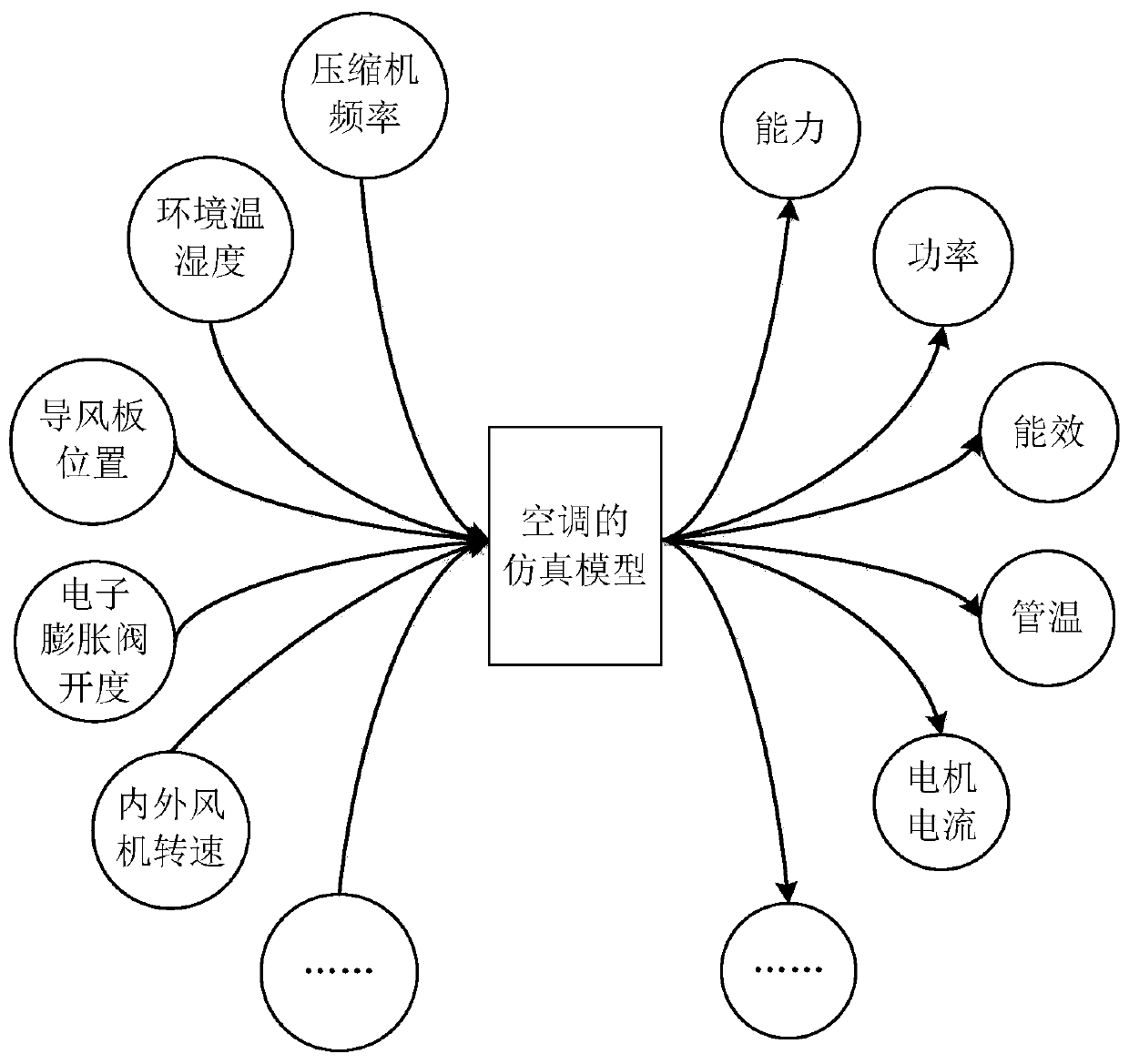Method and device for controlling air conditioner and air conditioner
An air-conditioning and control model technology, applied in mechanical equipment and other directions, can solve the problems of fixed air-conditioning control strategy, difficult to achieve optimal air-conditioning performance, and single, etc., and achieve the effect of maximizing the ability.
- Summary
- Abstract
- Description
- Claims
- Application Information
AI Technical Summary
Problems solved by technology
Method used
Image
Examples
Embodiment 1
[0029] According to an embodiment of the present application, an embodiment of a method for controlling an air conditioner is provided. It should be noted that the steps shown in the flowcharts of the drawings can be executed in a computer system such as a set of computer-executable instructions, and although A logical order is shown in the flowcharts, but in some cases the steps shown or described may be performed in an order different from that shown or described herein.
[0030] figure 1 It is a method for controlling an air conditioner according to an embodiment of the present application, such as figure 1 As shown, the method includes the following steps:
[0031] Step S102, read the pre-stored control model from the built-in chip of the air conditioner, wherein the control model is a neural network model, and the neural network model is obtained through machine learning training using multiple sets of data, and each set of data in the multiple sets of data includes: air...
Embodiment 2
[0090] According to an embodiment of the present invention, a device for controlling an air conditioner is provided, Figure 5 is a schematic diagram of a device for controlling an air conditioner according to an embodiment of the present application. Such as Figure 5 As shown, the device 500 includes a reading module 502 and an adjustment module 504 .
[0091] Wherein, the reading module 502 is used to read the pre-stored control model from the built-in chip of the air conditioner, wherein the control model is a neural network model, and the neural network model is obtained through machine learning training using multiple sets of data, and each of the multiple sets of data The set of data includes: the simulation data of the simulation model of the air conditioner; the adjustment module 504, which is used to adjust the control strategy of the air conditioner according to the control model, so that the air conditioner operates under the target working condition, wherein the ...
Embodiment 3
[0101] According to an embodiment of the present invention, an air conditioner is provided, including:
[0102]The built-in chip is set on the controller of the air conditioner to pre-store the control model. The control model is a neural network model. The neural network model is obtained through machine learning training using multiple sets of data. Each set of data in the multiple sets of data includes: Simulation data for the simulation model of the air conditioner.
[0103] The controller is communicated with the built-in chip, and is used to read the control model, and adjust the control strategy of the air conditioner according to the control model, so that the air conditioner operates under the target working condition, wherein the control strategy is used to determine the working mode of the air conditioner to be used.
[0104] Further, the air conditioner may also include other modules in Embodiment 2, which will not be repeated here.
PUM
 Login to View More
Login to View More Abstract
Description
Claims
Application Information
 Login to View More
Login to View More - R&D
- Intellectual Property
- Life Sciences
- Materials
- Tech Scout
- Unparalleled Data Quality
- Higher Quality Content
- 60% Fewer Hallucinations
Browse by: Latest US Patents, China's latest patents, Technical Efficacy Thesaurus, Application Domain, Technology Topic, Popular Technical Reports.
© 2025 PatSnap. All rights reserved.Legal|Privacy policy|Modern Slavery Act Transparency Statement|Sitemap|About US| Contact US: help@patsnap.com



